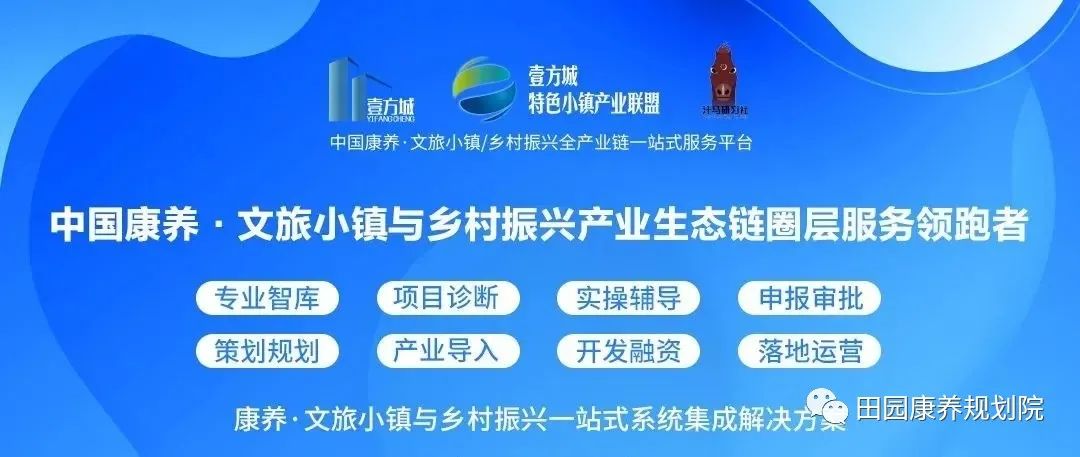
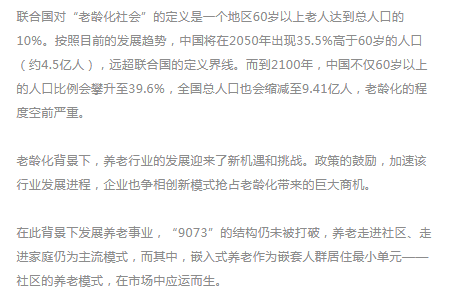
Embedded Elderly Care Forms
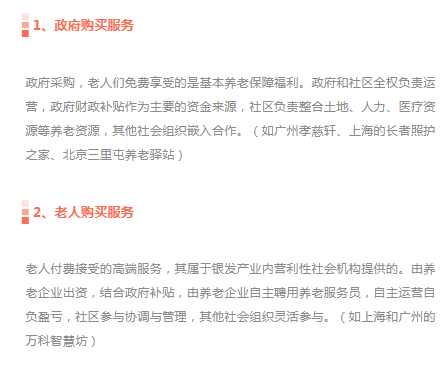
Related Policies for Embedded Elderly Care
In recent years, national policies have continued to support and guide, and local governments have gradually explored suitable paths based on their local conditions.
1. National Policies (Macro Guidance)
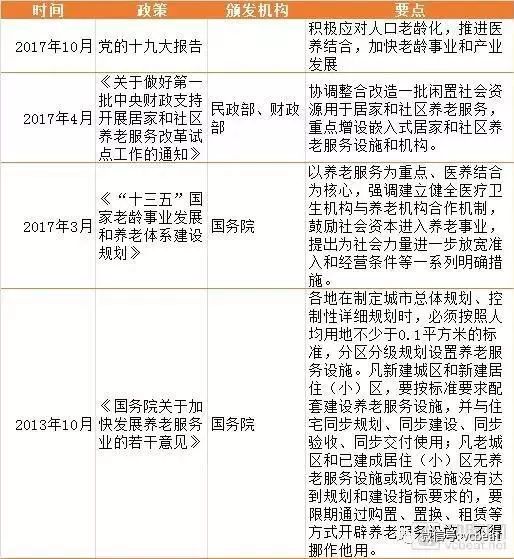
2. Regional Policies (Specific Implementation)
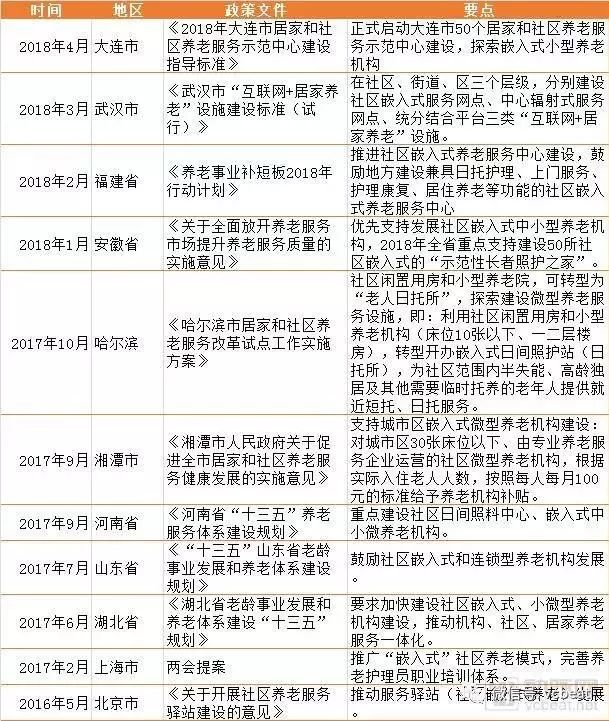
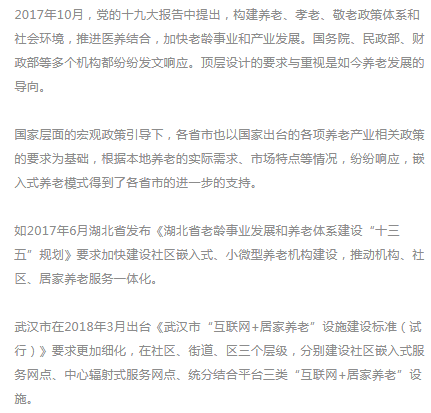
Active Participation from Various Players
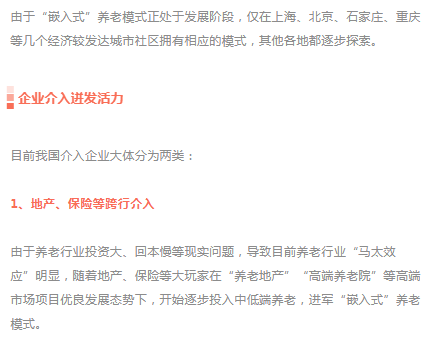
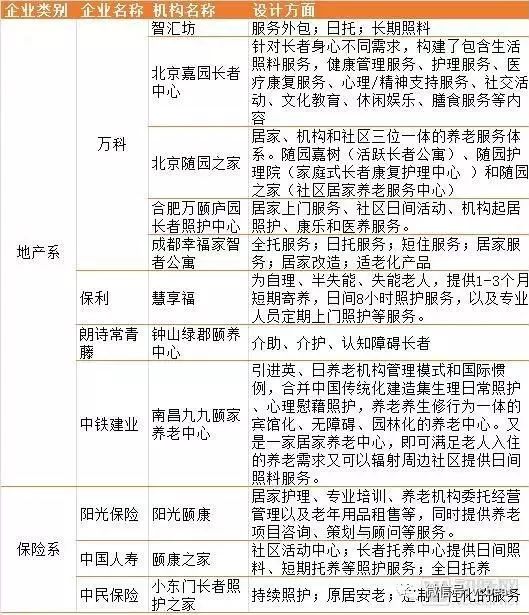
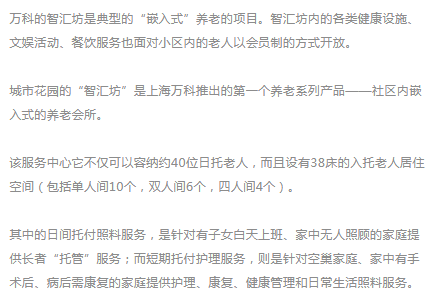
Smart Settings for Elderly Care at Zhihui Fang:
a. Spacious public spaces to encourage movement and communication among the elderly;
b. A specially designed sunny corridor to cater to the southern elderly’s love for sunbathing in winter. In heated rooms, the elderly can chat in the sun, creating a warm and happy scene;
c. The elderly care club provides healthy meals with low oil, low salt, and low sugar, focusing on steaming, boiling, baking, and roasting, combined with a clean and elegant dining environment to create a warm and comfortable space for the elderly to interact;
d. The elderly care club fully adopts “barrier-free design” to facilitate access for elderly individuals using wheelchairs. For example, changing ordinary pull doors to sliding doors increases space while facilitating wheelchair access; barrier-free elevators are also designed for two floors to assist the elderly in going up and down stairs; bright yellow protective bars are installed in places prone to slipping, such as restrooms; angled mirrors are convenient for elderly individuals in wheelchairs to see their entire bodies, etc.
There is a clear division of living space between day-care and resident elderly individuals:
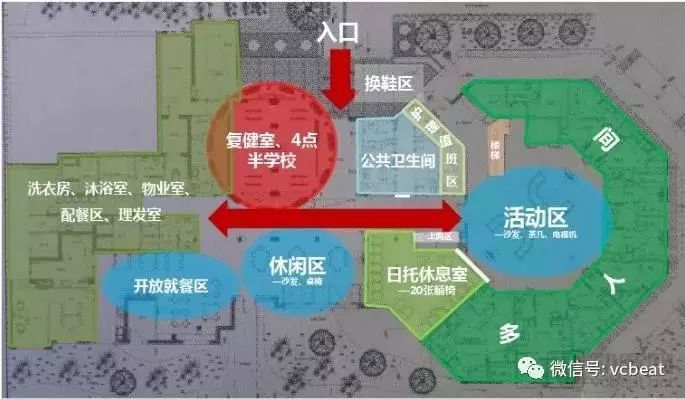

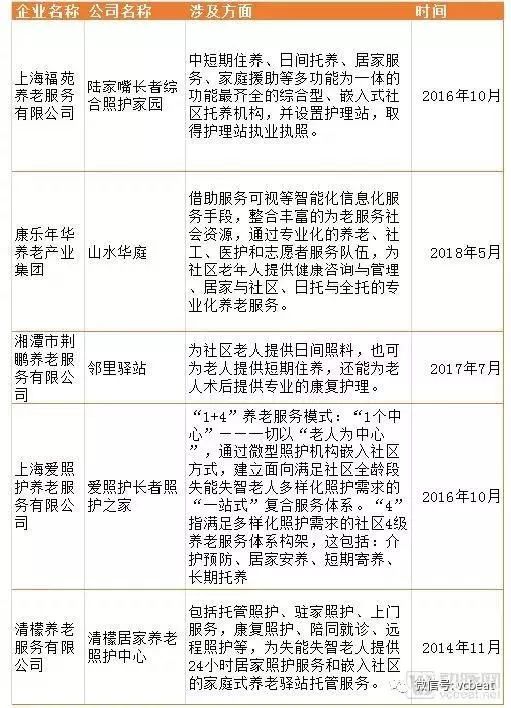
Shanghai Puxing Community Fuyuan Elderly Care Home is the first fully licensed elderly care home in Shanghai, with a total area of 470 square meters, 14 beds set up, achieving a 100% occupancy rate within 2 months of operation, and realizing bed turnover within 3 months, making it the first micro-institution in Shanghai to achieve operational revenue balance.

Different Embedded Elderly Care Models in Various Regions
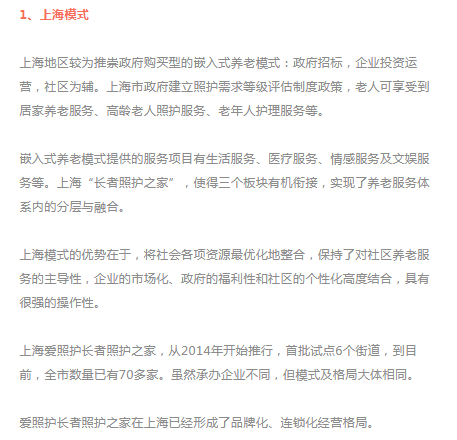
Features of Aizhaohu Elderly Care Home:
a. Smart nursing beds shared by families and institutions, with elderly care services available for “dine-in” or “take-out”;
b. Contracts signed with the elderly for limited-time stays, facilitating subsequent admissions and solving the “difficulty of finding a bed” issue;
c. Innovative salary model — payment per task, multiple incentives to retain nursing talent;
2. Beijing Model
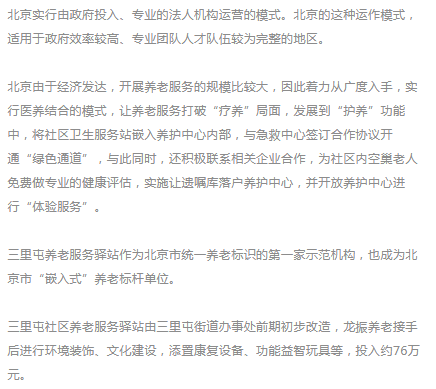
The elderly’s independent rooms are equipped with medical beds, televisions, small tea tables, and other basic furniture and equipment. The public hall has projection screens, sofas, and round tables, allowing the elderly to gather for movies, chatting, crafting, or simple nursing massages by medical staff. It can be said that “though small, it is fully equipped.”
Operational Overview of Sanlitun Community Elderly Service Station:
a. Meeting the main functions of “elderly service station” for short-term custody, daytime care, and home services;
b. Providing full custody, daytime care, temporary accommodation, small dining tables, assistance with bathing, haircuts, massages, meal delivery, rehabilitation and health care, accompanying medical visits, emotional comfort, spiritual care, legal consultation, cleaning, maintenance, barrier-free facility design and installation, rehabilitation medical equipment rental, and organizing volunteer services;
c. The total cost for short-term elderly accommodation, meal fees, and nursing fees ranges from 3600 to 6000 yuan/month, with daytime care fees being 100 yuan/day, and the cost for one meal + bathing assistance, foot care, and haircut is about 110 yuan;
d. Approximately 5 people per day receive meal assistance, totaling around 400 meal assistance instances;
e. 12 staff members, with accommodation, social security, and salary costs of about 8000 yuan per person per month. Revenue and expenditure balance, with a slight surplus.
3. Shijiazhuang Model
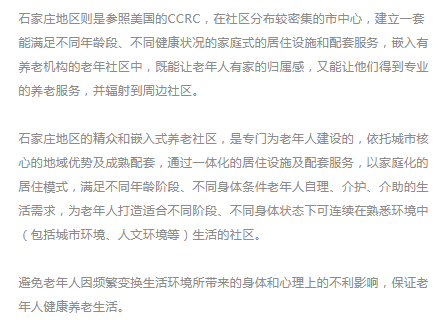
Problems with China’s “Embedded” Elderly Care Model
Experience Needs Further Accumulation
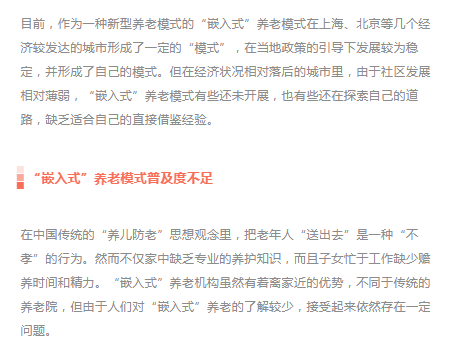
Lack of Clear Policies and Financial Support
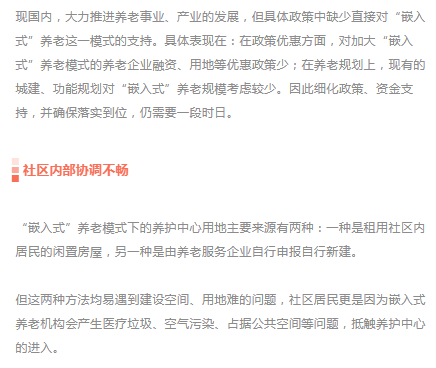
Controversies Over Costs
According to relevant surveys and interviews, there are different charging standards in different communities for the elderly care homes in Shanghai, some over 3000 yuan, while others are 6000 yuan.
For enterprises, high-tech facilities, intelligent monitoring, high-end management teams, and internationally advanced concepts require investment, while for residents, high costs may not be as affordable as hiring a nanny. Therefore, a reasonable price that both parties can accept needs to be established for embedded elderly care institutions to achieve a win-win situation.
Experiences from Japan’s Embedded Elderly Care Model
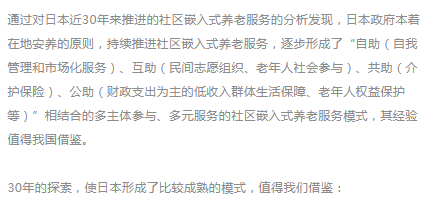
1. Care services have clear levels and detailed classification standards and usage limits
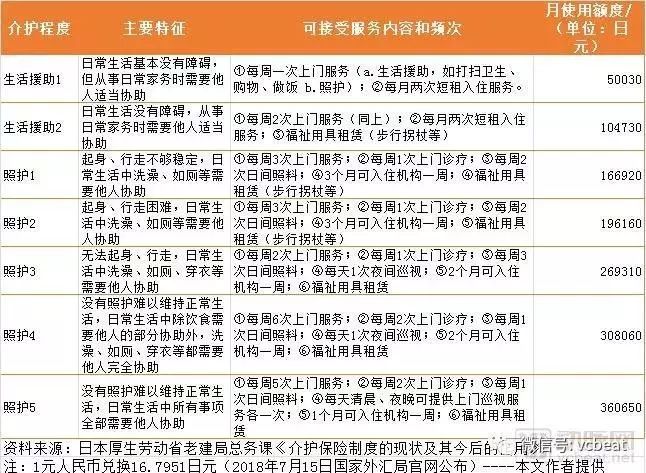
2. Community Embedded Elderly Care Services have Complete and Diverse Service Types
Japan’s community embedded elderly care services are continuously expanding in content and embedding forms, with increasingly flexible and diverse service methods. Currently, Japan’s community embedded elderly care services are mainly divided into the following four categories:
a. Institutional Elderly Care Services
Mainly for accepting middle to severe elderly individuals (care level 3 and above) who have difficulty with home care at welfare institutions and rehabilitation-centered elderly health facilities, as well as care facilities that combine medical care and nursing care. The costs of various services depend on the type of institution, type of accommodation, and care level.
b. Home Elderly Care Services
As shown in the figure below, this type of service has developed into 13 items, which can be roughly divided into two categories based on their service locations: home service and institutional daytime care service.
Home service includes home care and home medical care.
Home care services are mainly provided by professional care institutions designated by local governments with qualified nursing welfare workers or family caregivers.
Home medical care services are provided by designated home medical service stations or nurses and health workers from hospitals who visit the elderly at home to provide professional services. Institutional daytime care services mainly refer to care services provided by specialized institutions during the day.
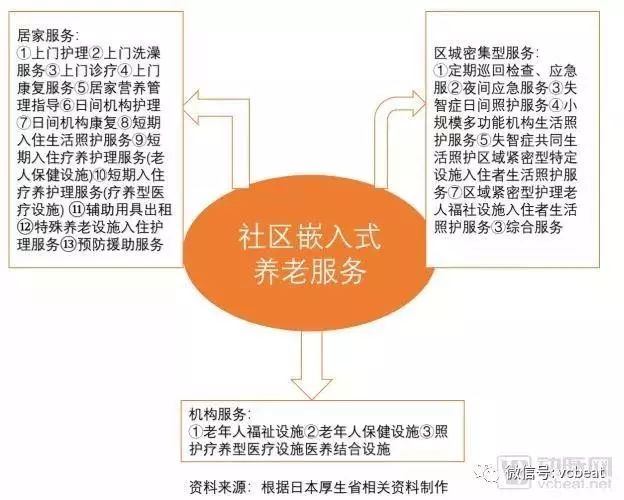
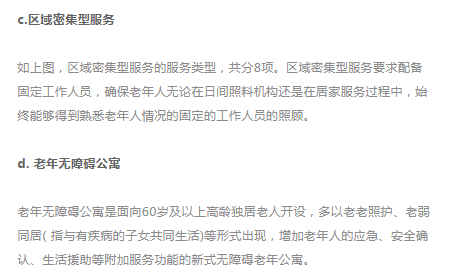
3. The Embedded Elderly Care Organizational Structure is Complete, Achieving Gradual Coverage
Japan has continuously launched a series of policies to promote home elderly care services, not only establishing a series of specific quantified goals and implementation strategies at the national macro level but also requiring local governments to formulate elderly welfare plans, and prioritizing the promotion of home elderly care services at the city, town, and village levels, resulting in gradual implementation and development since the late 1980s, with a complete organizational system providing significant support.
Your concerns may have been encountered by “others” before.
Your innovative problem-solving ideas may have been tried by “others” long ago.
Are these solutions reliable? “Others” have already verified them for you.
Go out and see, the answers are everywhere.
Source: Cultural Tourism Special Report Disclaimer Content is for learning and communication purposes only and not for commercial use. If there is any infringement, please contact us for deletion.

【Inspection Time】: December 22-27
【Inspection Location】: Japan – Nagoya – Osaka
【Participants】: Developers of rural revitalization projects, agricultural developers, local leading enterprises, cultural tourism groups, cultural tourism platforms, local government development and reform commissions, cultural tourism bureaus, health and wellness commissions, civil affairs bureaus, related departments of the elderly cadre bureau; real estate, property, insurance finance, elderly care, health and wellness, cultural tourism, elderly universities, travel agencies, and entrepreneurs, core senior management personnel (40 people scale)
【Organizer】: Beijing Yifang City Zhihui Technology Co., Ltd.
【Registration Phone】: 135 5239 6943 Advisor Wang
【Inspection Features】: Practical expert explanation + case analysis + module summary
Itinerary Arrangement
—Day 1 December 22
【Morning】Fly from China to Nagoya
【Afternoon】Visit Nagoya DELA Urban Farm
【Evening】Check into a hotel in Nagoya
—Day 2 December 23
【Morning】
Sunflower Elderly Care Hospital–One of the largest comprehensive health and wellness service groups in Aichi Prefecture, representing personalized care and small-scale nursing models
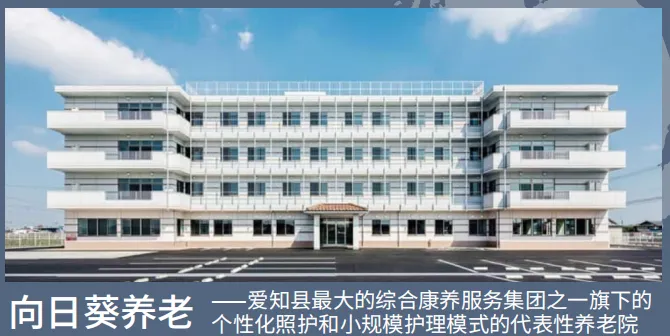
Guest Speaker:Mr. Kobayashi, Head of Sunflower Elderly Care Hospital

Sharing Theme:Operation Sharing of Sunflower Elderly Care Hospital
Inspection Highlights:
1. Operation model of a large-scale comprehensive health and wellness service group in Japan;
2. Personalized care and small-scale nursing model;
3. Providing various elderly care solutions.
【Lunch】Special lunch in Achi Village
【Afternoon】
Achi Village–Creating a hot spring + forest therapy base for “Japan’s No. 1 Starry Sky” IP
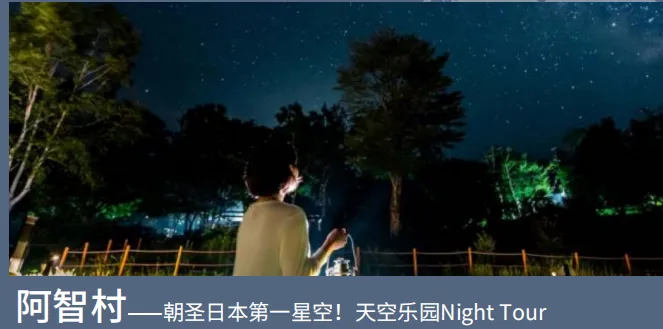
Guest Speaker:President of Achi Hirugami Tourism Bureau, Hiroshi Imai

Sharing Theme:Experience in Creating Japan’s No. 1 Starry Sky Village in Achi Village
Inspection Highlights:
1. First place in the “National Starry Sky Continuous Observation” activity;
2. Formed a rural night economy model led by starry sky night tours, attracting 160,000 visitors annually;
3. A model rural tourism destination in Japan.
—Day 3 December 24
【Morning】
MOKUMOKU Farm–Japan’s No. 1 “Parent-Child Ranch”
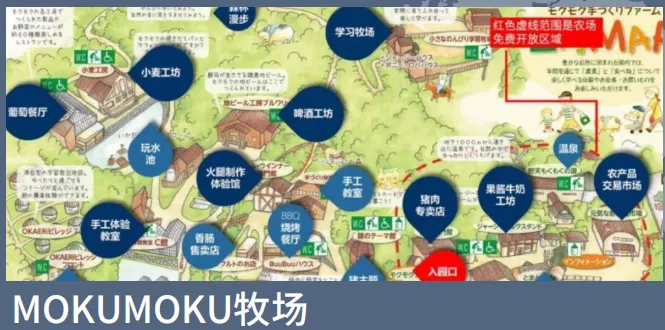
Guest Speaker:Yoshida Osamu, Founder of MOKUMOKU

Sharing Theme:MOKUMOKU’s Operation Strategy
Inspection Highlights:
1. An industrial farm themed around “nature, agriculture, and pigs”;
2. A population of only 100,000 in the area, yet achieving an annual visitor flow of 500,000 and 50,000 members;
3. An annual income of approximately 400 million yuan, making it one of the wealthiest villages in Japan, a miracle in the farming industry.
【Afternoon】
La Colina Omihachiman–A phenomenon-level internet celebrity store in Japan attracting over 3.2 million visitors annually
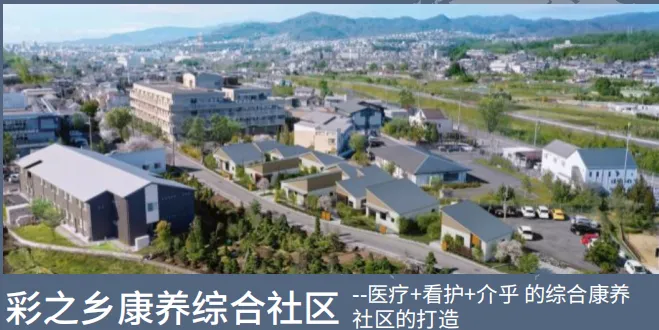
Guest Speaker:Shizaki Yoshiyuki, Member of the Kyoto City Commercial Promotion Committee, Chairman of the Shiga Prefecture Chamber of Commerce’s Market Development Support Research Group, Member of the Kyoto City Business Future Promotion Committee, Chairman of the Shiga Prefecture Chamber of Commerce’s Sales Strategy Research Group

Sharing Theme:The Explosive Product Model of La Colina
Inspection Highlights:
1. How to design a business model that integrates agriculture’s secondary production with rural nature;
2. The sustainable development business model of rural internet celebrity stores;
3. More than 3 million annual visitors, with annual dessert sales exceeding approximately 20 billion yen.
—Day 4 December 25
【Morning】
Arima Onsen Town–Japan’s most famous hot spring health town
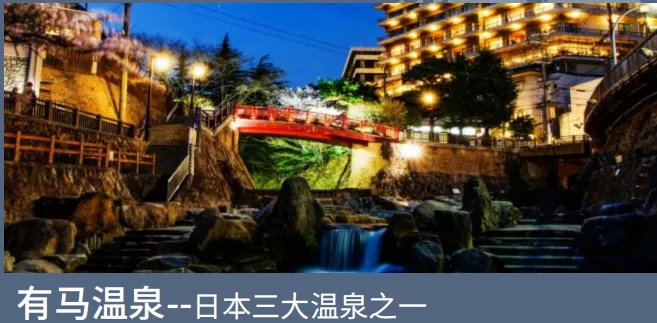
Guest Speaker:President of Arima Onsen Association, Imai Keisuke

Sharing Theme:The Customer Acquisition Strategy of Arima Onsen Health Town
Inspection Highlights:
1. A comprehensive tourism destination integrating health, dining, accommodation, travel, and shopping;
2. Arima Onsen is the oldest hot spring in the Kansai region and one of Japan’s three famous springs;
3. Extending the industrial chain and building a characteristic product system centered around Arima Onsen.
【Afternoon】
Colorful Town Health and Wellness Community–A comprehensive health and wellness community integrating medical care + nursing + care
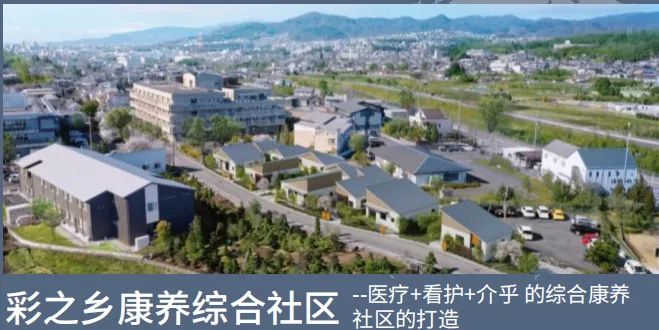
Guest Speaker:Project Operations General Manager Matsui Ryo

Sharing Theme:Planning and Operation of Colorful Town Health and Wellness Community
Inspection Highlights:
1. Creating a comprehensive health and wellness community themed around care;
2. The community includes special elderly residential areas, fee-based elderly residential areas, community service areas, short-term residential daytime care service communities, medical facilities, farms, and tea houses.
—Day 5 December 26
【Morning】
Future Medical International Base–Japan’s top future medical technology research complex
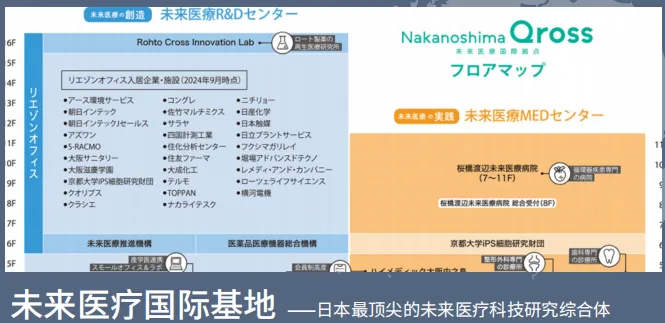
Sharing Guest:Dr. Yu (Tao), Osaka University Medical Doctor, former President of the Japan-China Life Sciences Association, currently responsible for the Japanese main board listed company ASONE, Osaka Future Medical International Base Qrossover Lounge

Inspection Highlights:
1. Introduction to the planning and positioning of the Future Medical International Base;
2. Visit to the Nakazato Oross “Future Medical International Base”;
【Afternoon】
堂岛 Health Care Clinic
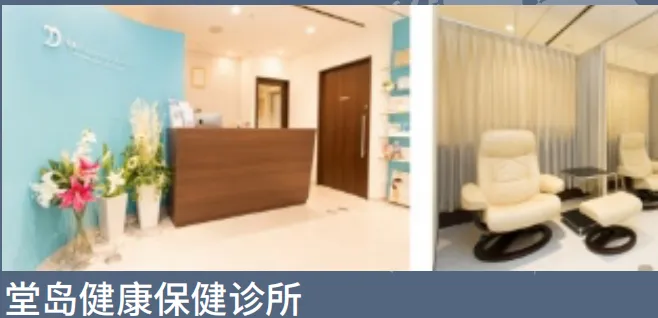
Guest Speaker:Director Sato Morihito

Sharing Theme:Operation and Services of Community Health Care Clinics in Japan
Inspection Highlights:
1. Learn about the operation management model of community clinics in Japan;
2. Understand the patient management process in clinics;
3. Explore how clinics provide comprehensive health management services through innovative service models within limited space and resources;
4. Learn from how clinics conduct diversified service projects under Japan’s strict medical supervision while maintaining a high level of patient satisfaction.
—Day 6 December 27
【Morning】Sightseeing & Shopping
【Afternoon】Fly back to China
Past Japan Site Visits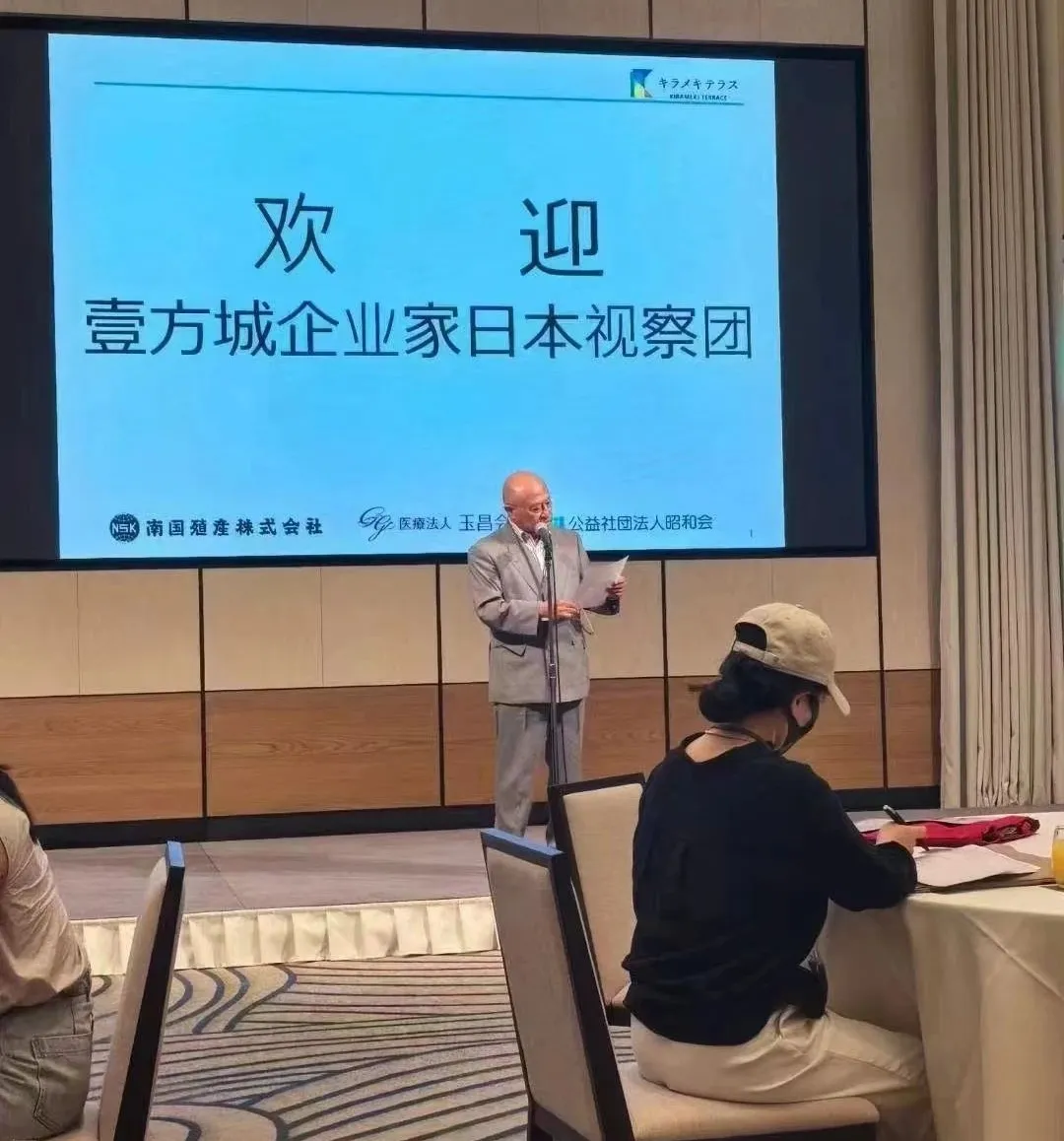
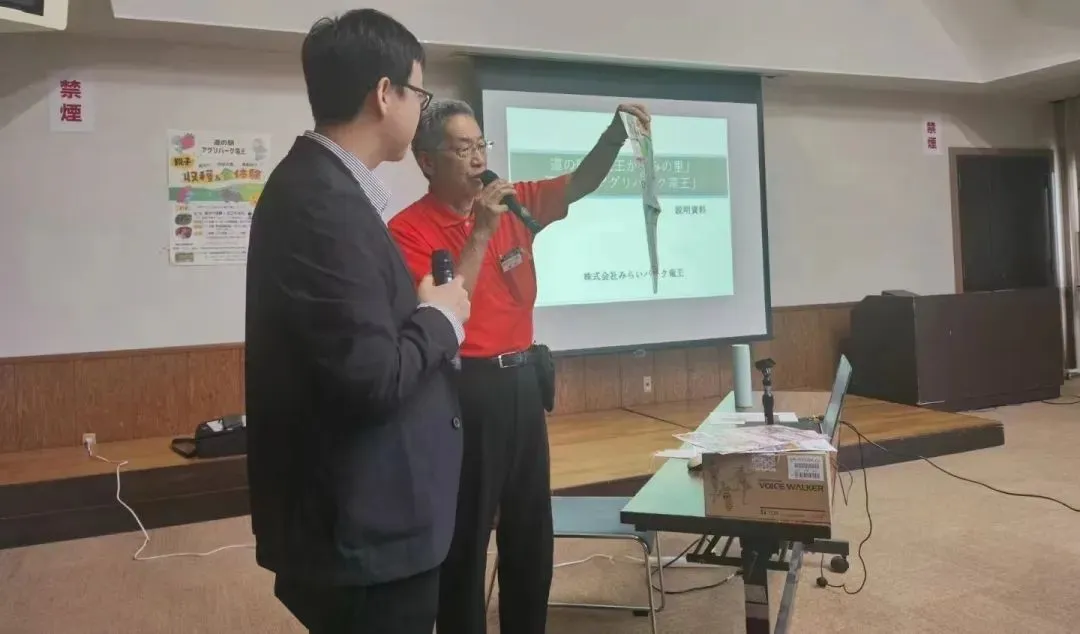
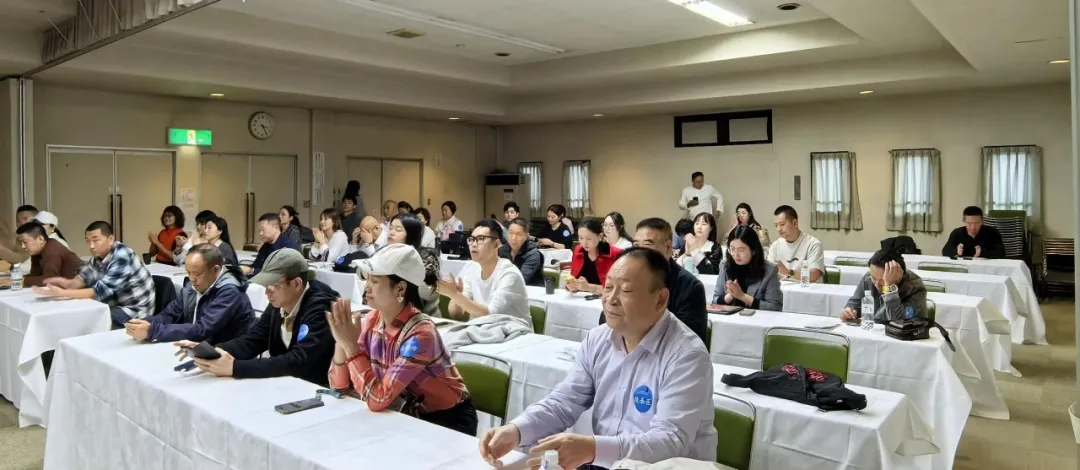
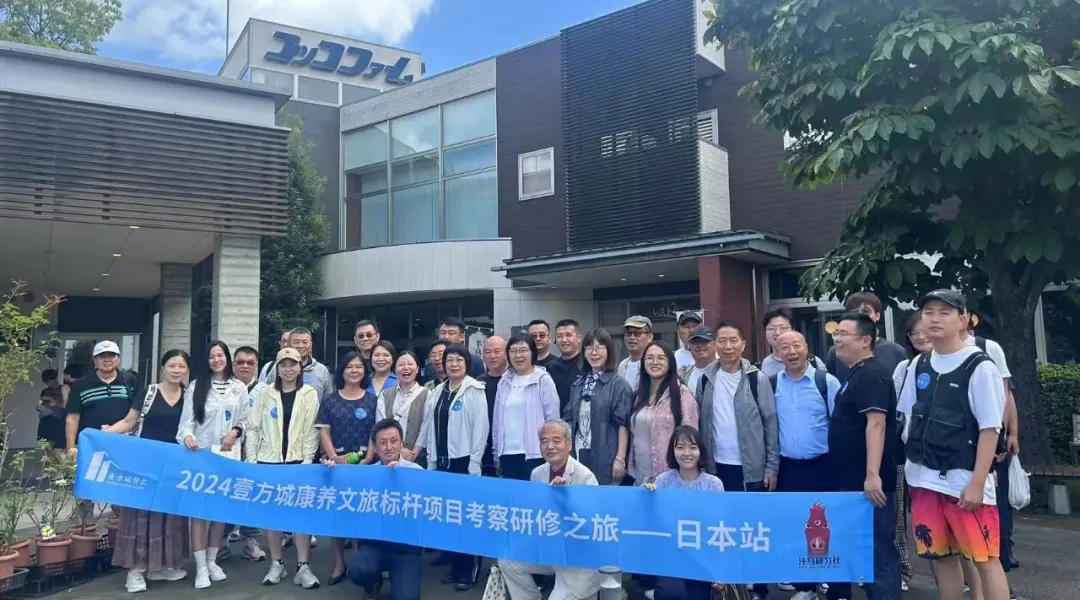
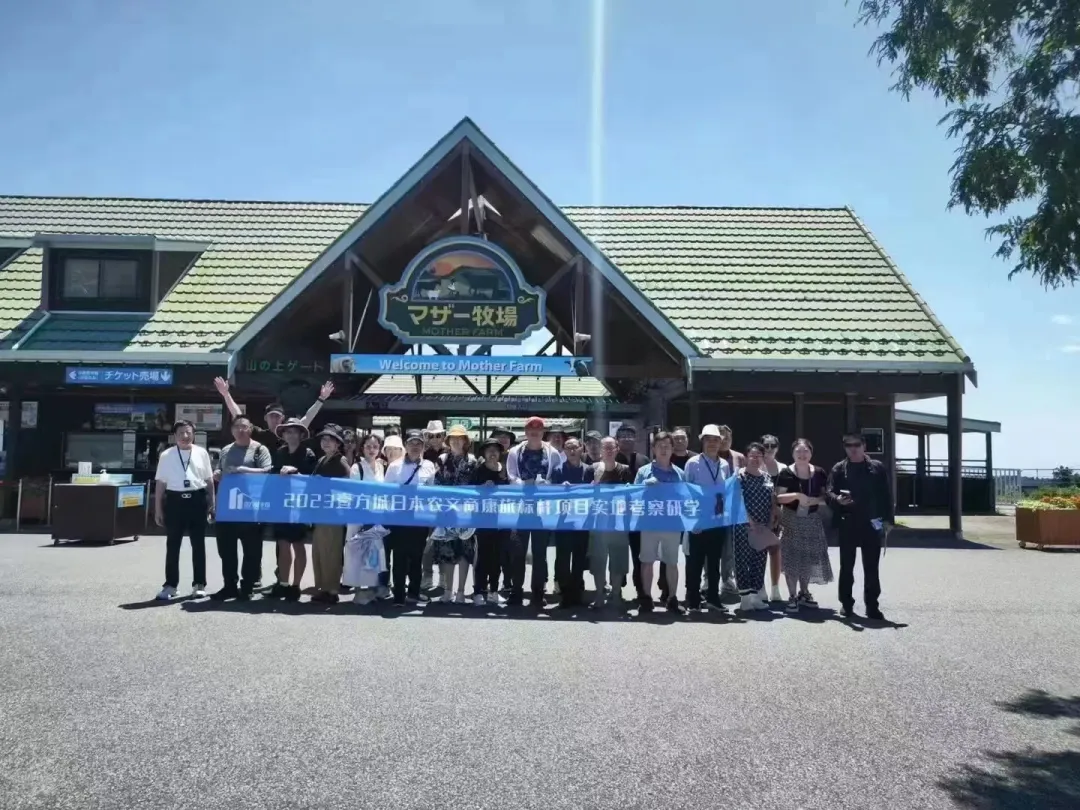
【How to Register】
1. PhoneRegistration:135 5239 6943 Wang Zhiwei
2. SMS Registration:Edit “Company Name + Name + Contact Information” and send it to135 5239 6943
3. WeChat Registration:Scan the QR code and note “Japan Study Tour + Company Name + Name Contact Information” or it will not be approved!
Long press to recognize the QR code for direct access to the organizer
(Registration Process: Receive Registration Application Form → Fill in Information for Review → Handle Fees → Issue Invoice)
Special Note: This meeting is a business activity and will charge related fees; also, spots are limited, so please consult and register in time!
【How to Register】
1. PhoneRegistration:135 5239 6943 Wang Zhiwei
2. SMS Registration:Edit “Company Name + Name + Contact Information” and send it to135 5239 6943
3. WeChat Registration:Scan the QR code and note “Japan Study Tour + Company Name + Name Contact Information” or it will not be approved!
Long press to recognize the QR code for direct access to the organizer
(Registration Process: Receive Registration Application Form → Fill in Information for Review → Handle Fees → Issue Invoice)
Special Note: This meeting is a business activity and will charge related fees; also, spots are limited, so please consult and register in time!
